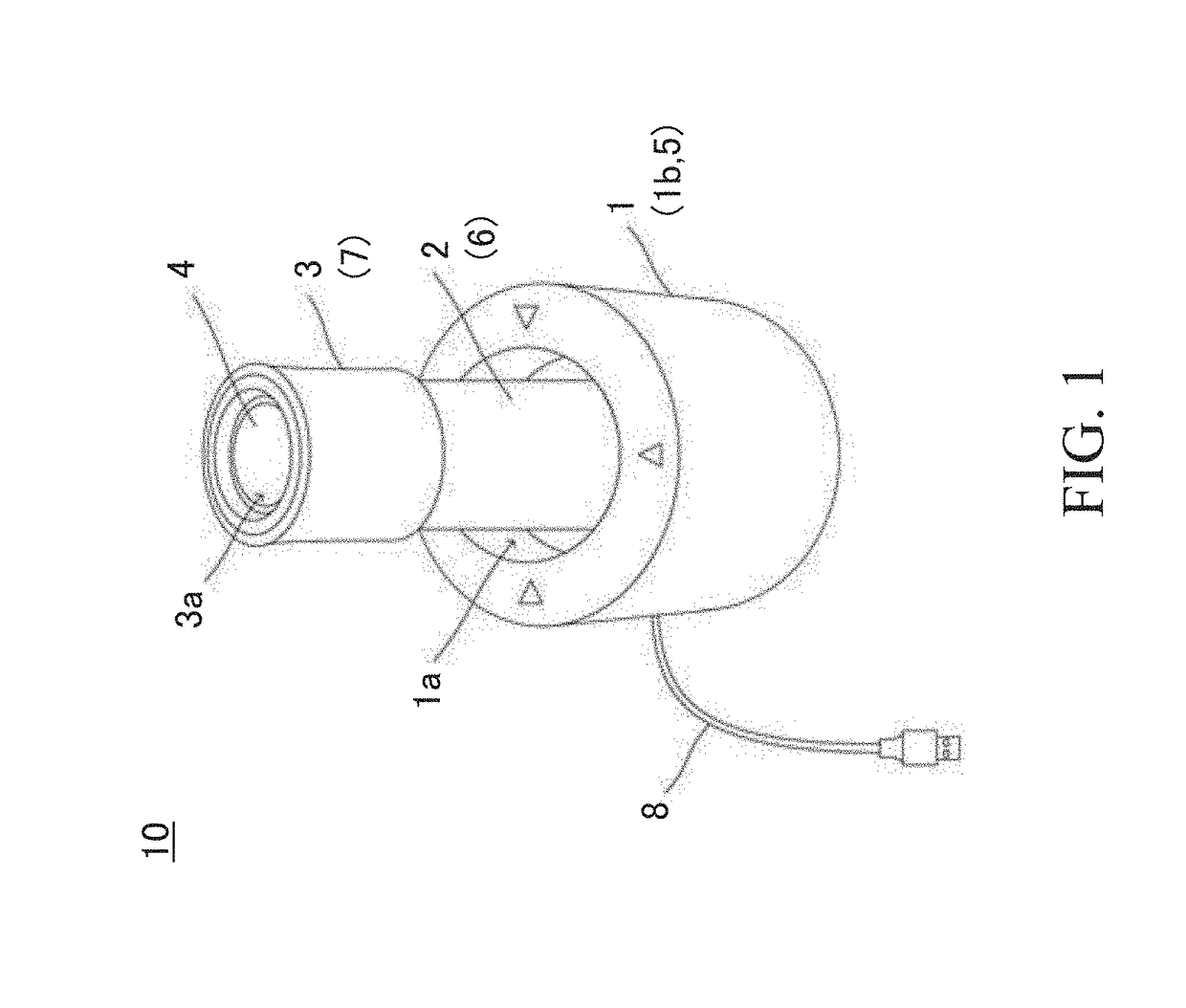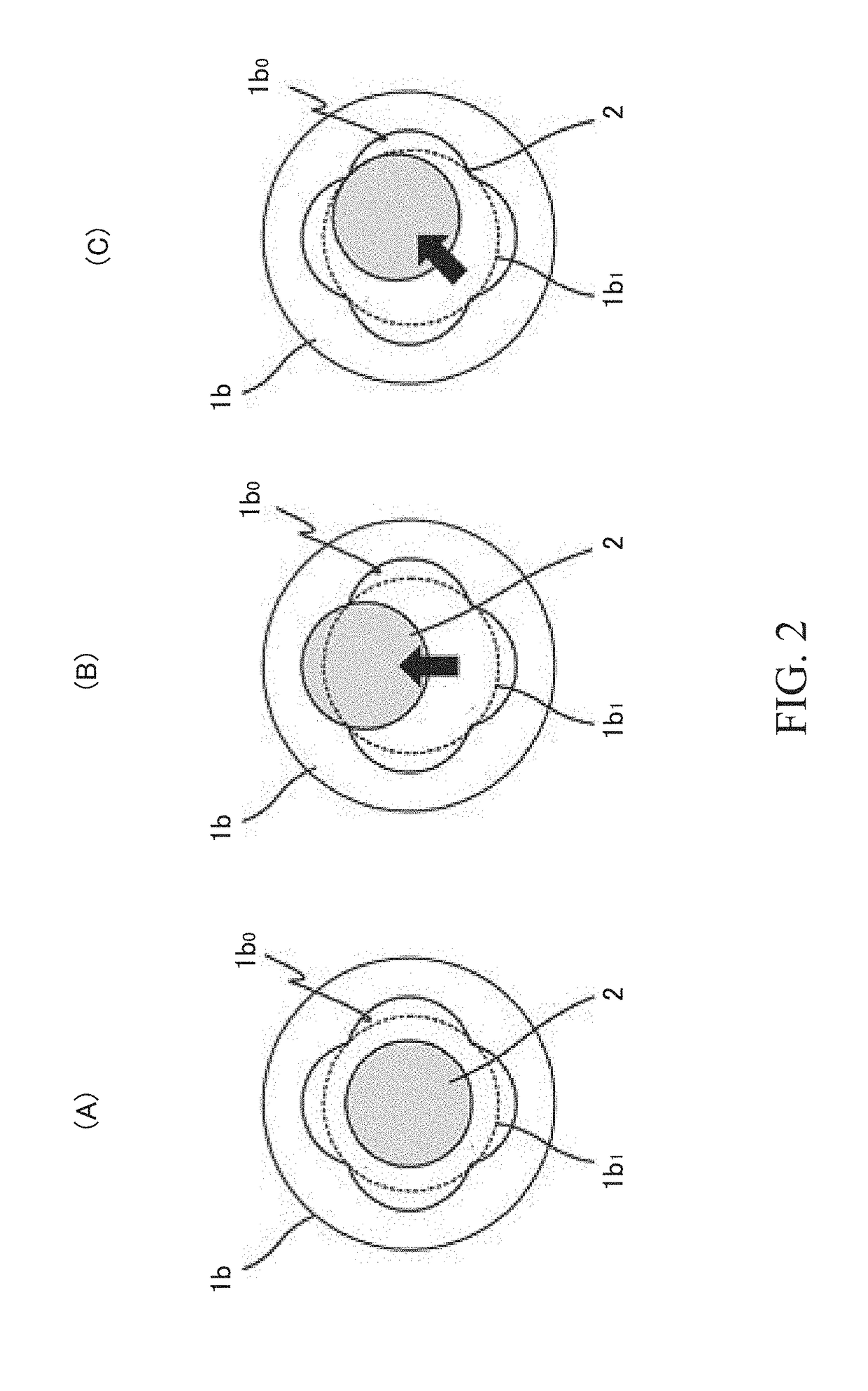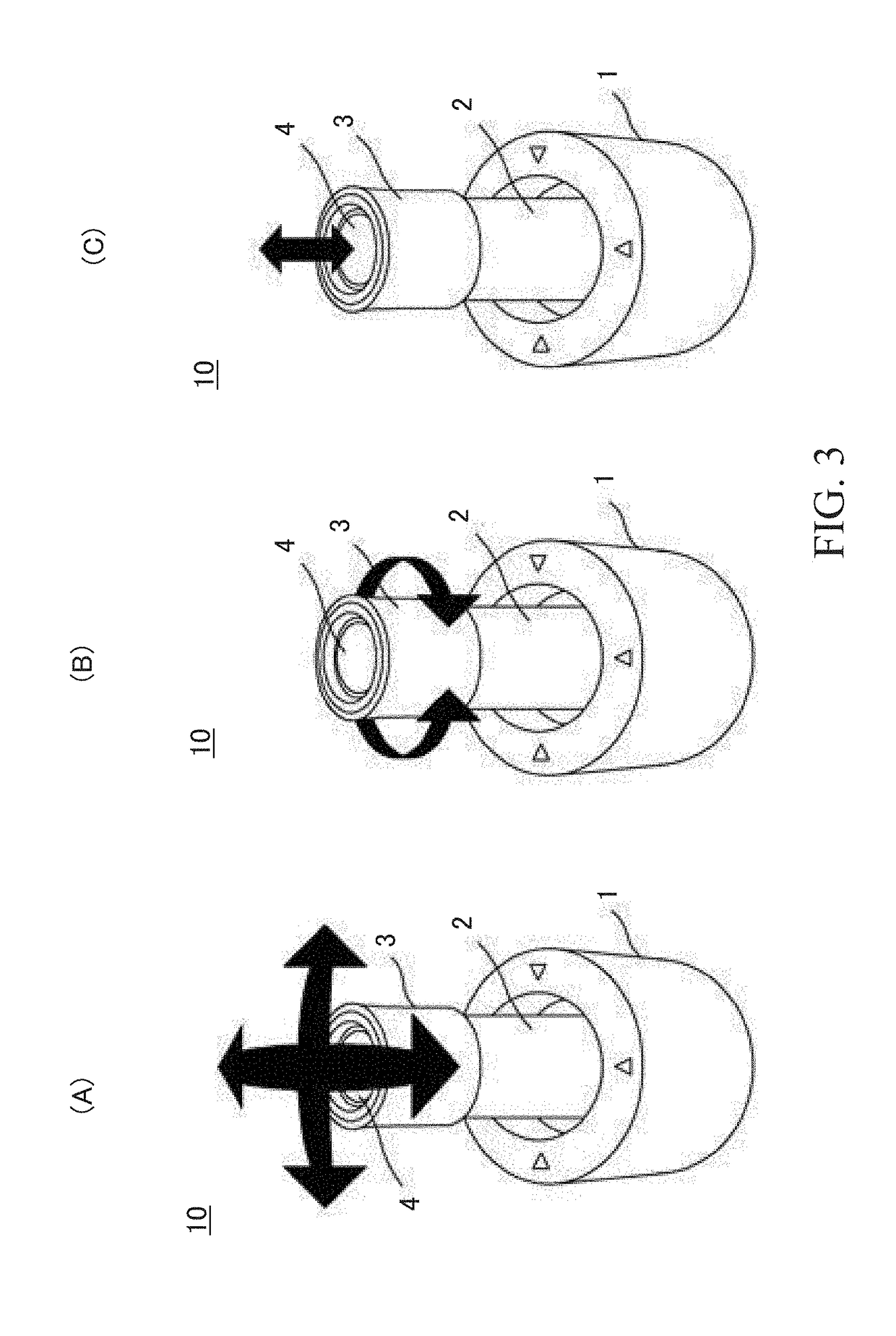Input Assistance Device And Drawing System
- Summary
- Abstract
- Description
- Claims
- Application Information
AI Technical Summary
Benefits of technology
Problems solved by technology
Method used
Image
Examples
first embodiment
[0058]With reference to FIG. 1, an input assistance device 10 according to the present invention is operated by user independently to generate signals configured to control an objective, and the input assistance device 10 comprises: an operation unit 1, a shaft 2, a first sensor 5, a rotating body 3, a second sensor 6, a switch 4, a detection unit 7, a universal serial bus (USB) cable 8, and a signal generation unit 9. In addition, front, rear, left, and right sides of FIG. 1 are referred to as front, rear, left, and right, respectively.
[0059]The operation unit 1 is configured to accommodate the shaft 2 and is made of resin in a cylinder shape, a width of the operation unit 1 is more than a height of the operation unit 1, and the operation unit 1 includes a cavity la formed on a center of a top thereof and a supporter (not shown) housed in the operation unit 1, wherein the supporter (not shown) has multiple components configured to obliquely support the shaft 2 in the cavity 1a, and...
second embodiment
[0094]FIG. 6 is a flow chart showing the decision process of the signals according to the present invention.
[0095]The signal generation unit 9 includes a first process 91 corresponding to the first and third detection results of the first sensor 5, a second process 92 corresponding to the second detection result of the second sensor 6, and a third process 93 corresponding to the detection result of the detection unit 7.
[0096]The second process 92 and the third process 93 of the second embodiment are identical to those of the first embodiment and are configured to transmit detected signals and the type of the signals.
[0097]The signals of the second detection result of the second sensor 6 include zooming in and zooming out of an object, rotation of the object, a size change of a brush, and a color density change of the brush. The signals of the detection result of the detection unit 7 include undo, redo, a color selection, printing or not respectively. The types of the signals are sel...
third embodiment
[0106]FIG. 8 is a flow chart showing the decision process of the signal according to the present invention. The signal generation unit 9 includes a first process 91 corresponding to the fifth and fifth detection results of the first sensor 5, a second process 92 corresponding to the second detection result of the second sensor 6, and a third process 93 corresponding to the detection result of the detection unit 7.
[0107]The detected signals and the types of the signals (i.e., the rotating angle detected by the second sensor 6 and operation of the switch 4 detected by the detection unit 7) in the second process 92 and the third process 93 are sent so that the user inputs the signals.
[0108]The types of the signals corresponding to the second detection result of the second sensor 6 include zooming in and zooming out of the object, rotation of the object, a size change of a brush, and a color density change of the brush. The types of the signals corresponding to the detection result of t...
PUM
 Login to View More
Login to View More Abstract
Description
Claims
Application Information
 Login to View More
Login to View More - R&D
- Intellectual Property
- Life Sciences
- Materials
- Tech Scout
- Unparalleled Data Quality
- Higher Quality Content
- 60% Fewer Hallucinations
Browse by: Latest US Patents, China's latest patents, Technical Efficacy Thesaurus, Application Domain, Technology Topic, Popular Technical Reports.
© 2025 PatSnap. All rights reserved.Legal|Privacy policy|Modern Slavery Act Transparency Statement|Sitemap|About US| Contact US: help@patsnap.com



